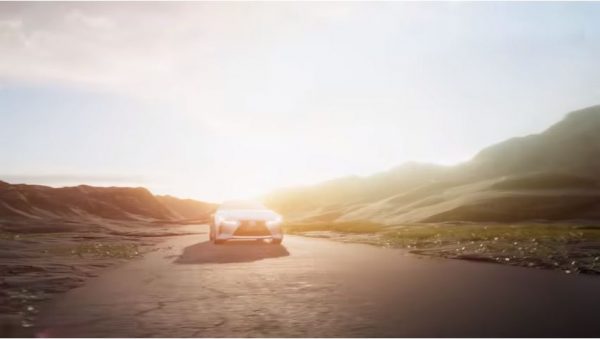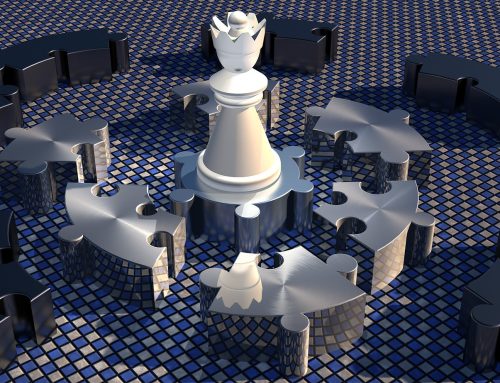Wie das Echtzeit-Rendering die Automobilbranche revolutioniert.
In diesem Beitrag berichten wir darüber, wie ein kleines Team durch CAD-Datenimport, Vorbereitung, Optimierung mit PiXYZ, Asset-Store-Pakete und Echtzeit-Rendering mit HDRP in Unity in kürzester Zeit atemberaubende Ergebnisse erzielt hat.
Wie alles zum Rollen kam …
Wie Sie vielleicht wissen, hat Unity im letzten Monat neue Angebote für die Automobilindustrie angekündigt und den Unity AutoTech Summit @ Unite in Berlin veranstaltet. Als Teil von Unity`s Arbeit wurde ein Teaser-Video mit dem Lexus LC 500 mit einer Vorschau-Version einer neuen High Definition Render Pipeline (HDRP) erstellt, um die High-Fidelity-Grafiken zu zeigen, die mit den neuen Möglichkeiten für die Automobilbranche erreicht werden können.
Seit Unity das Teaser-Video veröffentlicht hat, gingen viele Fragen und Kommentare darüber ein, wie derartig erstaunliche Ergebnisse erreicht werden konnten. In diesem Beitrag werden die wichtigsten Teile des Unity Industry Bundles erläutert – PiXYZ Studio und Unity Pro – und wie die High-Fidelity-Visualisierungen erreicht werden konnten. Außerdem arbeitet Unity aktuell an einem zweiten Video, in dem das Auto durch verschiedene Stadt- und Dorflandschaften fährt. Es werden auch Details darüber geteilt, wie die sich verändernden Umgebungen und die Beleuchtung eingerichtet werden können. Zudem werden die Asset-Store-Pakete aufgelistet, die die Szenarien liefern.
Lernen Sie das Team kennen.
Beginnen wir mit dem Team, das für die Erstellung der beiden Lexus LC 500 Videos veranwortlich ist: Adam Myhill, Head of Cinematics und Marc Cinq-Mars, Creative Director bei Unity.
Unterstützt wurden Sie von den Technical Artists Camille Rail und Dany Ayoub, Solutions Engineer Luc Vo Van und Veselin Eframov für die Unterstützung der Szenenumgebung.
Das Mesh.
Um bei der Arbeit mit Meshes in Unity die Echtzeit-Performance zu erreichen, müssen diese optimiert werden, um die GPU-Performance zu verbessern und die Anzahl der Zeichnungsaufrufe, die die CPU verbrauchen, zu minimieren. Umgekehrt erfordern fotorealistische Visualisierungen Meshes, die die Krümmung, die Charakterlinien und die Geometriedetails des ursprünglichen CAD-Modells, wie unser Lexus, genau beibehalten. Die leistungsstarken Tessellierungsalgorithmen in PiXYZ Studio nutzen Patchdaten aus dem CAD, um die Geometrie optimal zu tessellieren und bieten auch bei aggressiv dezimierten Meshes eine hervorragende Oberflächenqualität.
Sie können mehrere Parameter verwenden, um den Datenaufbereitungsprozess zu steuern, einschließlich der maximalen Akkordabweichung und des maximalen Winkels zwischen den Dreiecken. Eine Reihe von Algorithmen stehen zur Verfügung, um Meshes zu reparieren, Normals kohärent zu orientieren, UVs auszuwickeln, Texturen zu projizieren und andere Operationen durchzuführen.
PiXYZ Studio ermöglicht auch die Pflege der Produktstruktur und der Metadaten, die für die Weiterverarbeitung wichtig sind und zusammen mit dem Python-Scripting von PiXYZ verwendet werden können, um den Datenaufbereitungsprozess zu automatisieren. Beim Modell Lexus LC 500 waren die Quelldaten für das Auto recht gut organisiert – dank Lexus und Lights & Shadows, deren effiziente CAD-Datenaufbereitung den gesamten Prozess des Imports und der Datenaufbereitung vereinfachte.
HDRP FTW.
Die Entscheidung von Unity für HDRP fiel früh, um die Rendering-Qualität von Unity auf ein neues, höheres Niveau zu heben. HDRP wurde entwickelt, um realistische, auf physikalisch basierenden Renderings basierende Visualisierungen mit einem neuen, einheitlichen und kohärenten Lighting zu liefern. Das Lighting ist eines der wichtigsten Upgrades mit HDRP. Der Einsatz von linearer Beleuchtung mit Temperaturregelung, physikalischen Eigenschaften und physikalischer Dämpfung trägt zur Qualität der Ergebnisse bei.
Während Unity am ersten Teil arbeitete, war Screen Space Reflection (oder SSR) in Unity noch in der Entwicklung. Als am zweiten Teil gearbeitet wurde, war SSR zumindest schon einmal bereit getestet zu werden. Natürlich wurde diese Gelegenheit genutzt, da diese Technik detailliertere Reflexionen erzeugt als andere Methoden wie z.B. Cubemaps oder Reflection Probes. SSR machte es möglich, dem Gesamtbild des zweiten Teasers eine Extraportion Realismus hinzuzufügen. Dies kam zur rechten Zeit, weil das Ziel darin bestand, einen vollwertigen Autowerbespot zu schaffen, in dem zusätzliche Lightings- und Reflektionsmöglichkeiten benötigt würden, um die Produktion in einen Overdrive-Modus zu versetzen.

Diese Materialien sind beleuchtet.
HDRP unterstützt reichhaltigere Materialien und bietet mehr Kontrolle über die Lichtstreuung, einschließlich der Untergrundsteuerung. Für dieses Projekt hat Unity den standardmäßigen Lit Shader für HDRP verwendet, mit einer Klarlackierung für die Farbe. Unity hat die Lackfarbe sorgfältig auf die verfügbaren Farboptionen des LC 500 abgestimmt und sich für Silber entschieden, weil es eine tolle Farbe ist, um unterschiedliche Lichttemperaturen zu zeigen. Für den Innenraum wurden einige gemessene Materialien verwendet, die mit einem neuen, von Unity entwickelten Photometrieverfahren aufgenommen wurden. Wie Unity bereits in Berlin ankündigte, ist für dieses Jahr noch geplant, für alle Kunden eine breite Palette über den Asset Store bereitzustellen.
Die richtigen Schritte.
Ein überzeugendes Video braucht hochwertige Daten, aber auch das richtige kreative Konzept. Unity`s Cinq-Mars und Myhill arbeiteten gemeinsam an den Kamerapfaden und -winkeln, um die sinnlichen Kurven und dramatischen Reflexionen des LC 500 hervorzuheben, die sowohl das Auto als auch die Fähigkeiten des neuen HDRP von Unity zeigen. Alle Animationen wurden mit Timeline erstellt. Cinematische Kameras wurden für das Framing und die Bewegung verwendet, zusätzlich zur Steuerung der Nachbearbeitung mit benutzerdefinierten Profilen bei jeder Aufnahme.
Im ersten Teil sollten Emotionen geweckt, Spannung erzeugt, Rätsel aufgeworfen und das Auto zum Leben erweckt werden, als würde es Sie mit auf eine Reise mitnehmen. Unity`s Idee war es, etwas Kurzes und Persönliches zu kreieren, also verwendeten Sie enge und nahe Aufnahmen, die nie zu viel enthüllten, um das Mysterium am Laufen zu halten, während das Musiktempo langsam zunimmt. Das Auto selbst ist wunderschön und es hat ein erstaunlich realistisches Glänzen, da es die verschiedenen High-Dynamic-Range (HDR)-Umgebungen wiederspiegelt. Die Musik spielt eine große Rolle bei der Zusammenführung des Stücks, besonders wenn es mit Hilfe der Timeline geschnitten und mit den Beats synchonisiert wird.
Im zweiten Teil wollte Unity das Auto in Bewegung setzen und dabei nicht nur eine einfache Fahrt bieten. Unity hatte die Absicht, einen vollwertigen Autowerbespot zu entwickeln, der den Lexus nicht nur aus vielen Perspektiven zeigt, sondern ihn in einer Vielzahl von städtischen und ländlichen Umgebungen und unter verschiedenen Tages- und Lichtverhältnissen einfängt, auch in einer modernen Stadt im Morgengrauen, in einem dunklen Autobahntunnel sowie in bergigen und bewaldeten Regionen. Um die Zuschauer auf diese landschaftlich reizvolle Reise mitzunehmen, wurden zahlreiche Pakete aus dem Asset-Store genutzt.
Spotlights und Scheinwerfer.
Die richtige Beleuchtung ist das Geheimnis der visuellen Qualität und beginnt damit, das hervostechende der Show zu verstehen – das zu beleuchtende Objekt. Im Falle des Lexus war es wichtig, Reflexionen zu fokussieren, um die Charakterlinien und Kurven des Fahrzeugs hervorzuheben. Für den ersten Teil hat Unity hauptsächlich eine Garagenumgebung mit mehreren rechteckigen Flächenleuchten verwendet, um die Krümmung der Karosserie zu betonen. Die Objekte wurden ein wenig mit unterschiedlichen Lichttemperaturen vermischt und am Ende sieht man Reflexionen von einigen verschiedenen Umgebungen, um zu zeigen, wie Sie den Charakter des Autos verändern.
Wenn Sie zum Beispiel im zweiten Teil genau hinsehen, sehen Sie einen Wald, der sich im Seitenfenster des LC 500 spiegelt. Um den Fokus auf das Auto zu behalten, haben wir die Umgebungen nur für die Beleuchtung verwendet und nicht die Umgebungen in der Szene wiedergegeben. Die Beleuchtung erfolgte meist mit einem hochauflösenden HDRI. Die Innenbeleuchtung verwendete zwei omnidirektionale Punktlichter, um das Lexus-Logo gleich am Ende zu spiegeln.
Atemberaubende Animationen, die sprachlos machen.
Für optimale Qualität wurden die Frames aus Unity in 4K gerendert und in Davinci Resolve auf 1080 verkleinert. Natürlich wollte Unity das bestmögliche Video veröffentlichen, also wurde die verkleinerte Version für die Enthüllung gewählt.
Für die Nachbearbeitung wurden Screen Space Ambient Occlusion, Bloom, Color Grading, Depth of Field, Temporal Anti-Aliasing und ein wenig Chromatic Aberration verwendet. In Wahrheit war die Nachbearbeitung recht mild, farblich abgestuft. Der neue HDRP-Renderer funktioniert wirklich gut, so dass Unity nicht lange an der Farbe oder der Beleuchtung arbeiten musste.
Auf der HDRP-Roadmap.
Unity ist zufrieden mit dem, was erreicht wurde, aber es gibt immer noch viel zu tun. Es wird weiterhin daran gearbeitet werden, die höchstmöglichste Qualität in Echtzeit zu erreichen. HDRP ist noch in der Vorschau und Unity hat aus diesem Projekt sehr gute Lehren gezogen, die auf die HDRP-Entwicklung angewendet werden. Unity hat die Wechselwirkung zwischen hochglänzenden Oberflächen mit Mikrofacetten und hochintensiven Lichtquellen verbessert. Es sind in naher Zukunft noch bessere Ergebnisse zu erwarten, wenn neue Möglichkeiten und fortschrittlichere Materialien hinzugefügt werden.
Vielen Dank für die Fahrt.
Natürlich war das Zusammenstellen dieser Videos eine Teamleistung, die über Unity hinausging. Deshalb gilt Unity`s Dank besonders Toyota Motor Corporation und Lexus für die hervorragende Zusammenarbeit, PiXYZ Software für die Entwicklung von PiXYZ Studio sowie Light & Shadows für die Unterstützung bei der Datenaufbereitung.
Vielen Dank für ihren Besuch.


